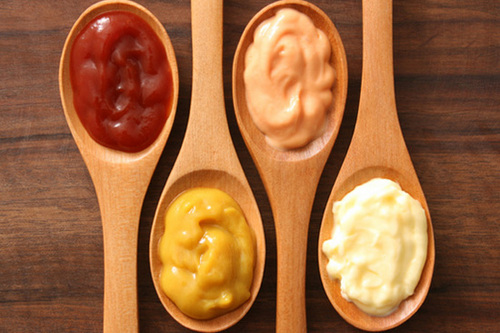 Subway has the art of making a sub sandwich down to a science. And it shows. The American restaurant is one of the fastest growing franchises in the world. It is also largest restaurant chain in the world. As of February 2011, it has about 34,003 restaurants in 95 countries/territories. One may think it's just about throwing a sandwich together, but there's a lot more to it than that. Every little thing in the sandwich process has been scientifically tested. Millions of dollars put towards researching what makes "the perfect sandwiches" (I'm not kidding!). Everything from bread types to formulas to EXACT-DOWN-TO-THE-TEE amounts of everything. And since I'm what the Subway corporation calls a "Sandwich Artist", I'm right on the front lines. I know what makes the perfect sandwich. And now you will too.
Subway has the art of making a sub sandwich down to a science. And it shows. The American restaurant is one of the fastest growing franchises in the world. It is also largest restaurant chain in the world. As of February 2011, it has about 34,003 restaurants in 95 countries/territories. One may think it's just about throwing a sandwich together, but there's a lot more to it than that. Every little thing in the sandwich process has been scientifically tested. Millions of dollars put towards researching what makes "the perfect sandwiches" (I'm not kidding!). Everything from bread types to formulas to EXACT-DOWN-TO-THE-TEE amounts of everything. And since I'm what the Subway corporation calls a "Sandwich Artist", I'm right on the front lines. I know what makes the perfect sandwich. And now you will too.Step One: The Baking Center. Probably the MOST important part of the entire sandwich making process. Without a baking center, there's no bread. And without bread, there's no sandwich. Plus, who can resist the inviting scent of warm, freshly baked bread? There are 5 varieties: Italian, 9-Grain Wheat, Italian Herb & Cheese (Parmesan Oregano in some locations) , 9-Grain Honey Oat, and Hearty Italian. After we flavor and score them by hand, they must rest in the proofer for about an hour so they can rise. Once they have risen to the precise size (we have a tool to measure) they can then be transferred into the oven for approximately 14 minutes to bake. When they are perfectly golden brown, they must sit on the cooling rack until they are ready to use. (There is also wraps or flat-breads available) Once the customer has selected their bread of choice, it must be hinged cut at a 45 degree angle. This ensures that everything in the sandwich slides back towards the hinge instead of out towards the customer. If the customer wants the smaller 6-inch sub, the bread must then be cut in half.
Step Two: The Sandwich Type. This is where the desired meats and cheeses are placed on the selected bread type (must be placed on top half of bread). There are many to choose from, each with their own specific formula.. The formulas tell you the amount of all the meats/cheeses you must put on depending on the type of sandwich. All meats and cheeses must be places on the top half of the bread.
Here are examples of some sandwich formulas (cut in half for 6-inch sandwich):
Black Forest Ham: 8 slices Turkey Breast: 6 slices
Italian BMT: 6 slices pepperoni, 6 slices salami, 4 slices ham
Tuna: 4 level scoops Meatball Marinara: 8 meatballs
Steak & Cheese: 2 4oz. portion trays Chicken Teriyaki: 2 3.25oz. portion trays
Cheese (American, swiss, provolone): 4 slices
 Sandwich formulas can not but mixed or altered. They can, however, be doubled for an additional price. Once the sandwich type has been selected, the customer has the option of toasting the sandwich. If so, it is sent open faced into Subway's Turbo Toaster Oven.
Sandwich formulas can not but mixed or altered. They can, however, be doubled for an additional price. Once the sandwich type has been selected, the customer has the option of toasting the sandwich. If so, it is sent open faced into Subway's Turbo Toaster Oven.Step Three: "The Works". Additional items are added to the sandwich during this step, including veggies, condiments, and seasonings. The veggies also have their own formula and must be placed on the bottom half of the bread.
Here are examples of some veggie formulas (cut in half for 6-inch sandwich):
Lettuce: 1.5oz. Tomato: 6 slices
Cucumber: 6 slices Black Olives: 6 halves
Green Pepper: 6 slices Red Onion: 1.0oz
Banana Pepper: 6 rings Jalapeno Peppers: 6 rings
There is even a specific way to add the condiments. Some are placed over the meats (top-side) and some are placed over the veggies (bottom side):
Top Side: Bottom Side:
-Mayo (regular or lite) -Oil
-Mustard (yellow, deli, or honey) -Red Wine Vinegar
-Ranch Dressing -Raspberry Vinigrette
-Southwest Chipotle Sauce -Salt
-Sweet Onion Sauce -Pepper
-Buffalo Sauce -Oregano
-Kechup
Unlike the meat/cheese formulas, the veggies and condiments can be altered to the customers liking free of charge. CLICK HERE FOR COMPLETE SANDWICH FORMULA CHART (may take a few seconds to load)
This was the last step in the sandwich making process. Although it may seem tedious, these sandwich formulas are backed with millions of dollars of research. These steps and formulas are what makes these sandwiches scientifically perfect.









